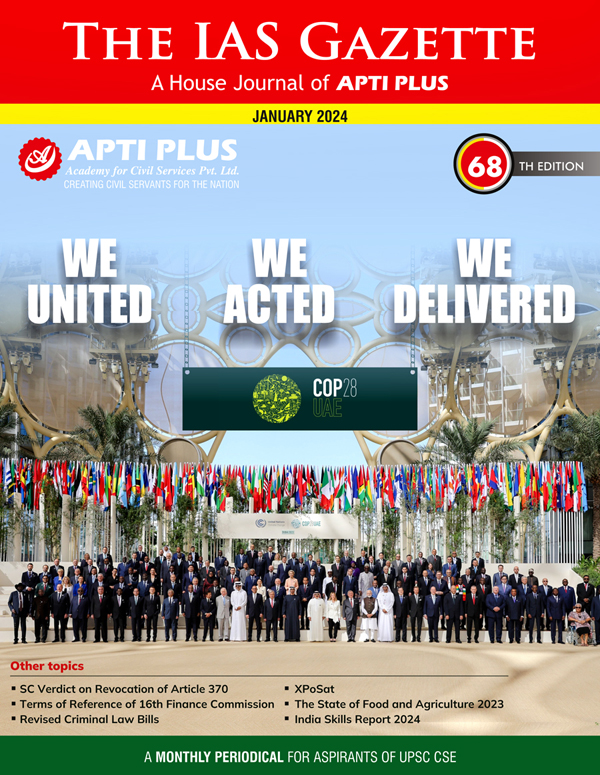Wild Life (Protection) Licencing (Additional Matters for Consideration) Rules, 2024.
_Licencing_(Additional_Matters_for_Consideration)_Rules,_2024._.jpg)
Disclaimer: Copyright infringement not intended.
Context
- The Union Environment Ministry issued a notification titled: Wild Life (Protection) Licencing (Additional Matters for Consideration) Rules, 2024.
Introduction:
- The central government has introduced revised rules governing wildlife trade licensing.
- These rules specifically exclude certain species from the licensing process.
- The regulations are outlined in the Wild Life (Protection) Licensing (Additional Matters for Consideration) Rules, 2024.
Categories Affected:
- The revised guidelines have implications for stakeholders involved in the trade of snake venom, captive animals, trophy animals, and stuffed animals.
- This marks the first substantial revision since the rules in 1983.
Previous Rules (1983):
- Under the rules from 1983, licenses for trading in wildlife were prohibited for species listed in Schedule I or Part II of Schedule II under the Wildlife Protection Act 1972.
- Exceptions were allowed in exceptional cases, subject to the prior approval of the central government.
Background (2022 Amendments):
- In 2022, amendments to the Wildlife Protection Act led to the merging of four schedules of wild animals into two, reducing the total from six to four.
- Schedule I now includes animals requiring utmost protection, while Schedule II comprises species needing comparatively lower protection.
- The categories under Schedule II encompass birds, reptiles, mammals, and amphibians.
- Schedule IV is dedicated to species to be protected under the Convention on International Trade in Endangered Species of Wild Fauna and Flora (CITES).
Global Context:
- The World Wildlife Report 2020 highlights a global issue, revealing that about 6,000 species of flora and fauna were seized globally from 1999-2018, underscoring the challenges in combating illegal wildlife trade.
Wild Life (Protection) Licencing (Additional Matters for Consideration) Rules, 2024
Revised Licensing Rules (2024):
- Earlier rules restricted licences for trading in Schedule I and Part II of Schedule II species.
- New notification lifts restrictions on Schedule II species but maintains them for Schedule I species.
Factors for consideration in the licensing process include:
- The capacity of the applicant, including facilities, equipment, and the feasibility of business premises.
- The source and manner in which supplies would be obtained.
- The number of existing licenses in the relevant area.
- The potential implications on hunting or trade of the concerned wild animals.
Modification Unexplained:
- The rationale behind the modification, especially the lifting of restrictions on Schedule II, remains unexplained.
- Lack of clarity on the government's decision to alter licensing rules.
Conclusion:
- The revised rules aim to bring transparency and efficiency to the wildlife trade licensing process. However, the lack of clarity on the removal of restrictions on Schedule II species raises questions.
- The considerations for license issuance emphasize the government's commitment to evaluating the impact on wildlife and trade, showcasing a nuanced approach.
Way Ahead
Review of Schedule II Species:
- Conduct a transparent review to explain the rationale behind lifting restrictions on Schedule II species.
- Ensure alignment with conservation goals and international commitments.
Stakeholder Consultation:
- Facilitate inclusive consultations with wildlife experts and stakeholders to gather diverse perspectives.
- Use feedback to inform decision-making and ensure balanced outcomes.
Scientific Evaluation:
- Commission scientific studies to assess the conservation status of affected species.
- Use evidence-based findings to guide licensing decisions.
Capacity Building:
- Invest in training wildlife authorities for effective implementation.
- Enhance skills in species identification, monitoring, and law enforcement.
Incentives for Conservation:
- Introduce incentives for positive contributions to conservation efforts.
- Recognize and reward sustainable practices aligned with conservation goals.
Legislative Alignment:
- Ensure alignment with existing wildlife protection laws and international conventions.
- Harmonize regulations for a cohesive legal framework.
Implementing these steps will contribute to a balanced approach in regulating wildlife trade, fostering conservation while addressing stakeholder needs.
|
PRACTICE QUESTION Q. What is a notable change introduced by the Wild Life (Protection) Licensing (Additional Matters for Consideration) Rules, 2024? A) Inclusion of new wildlife species in Schedule I B) Lifting of restrictions on Schedule II species C) Expansion of licensing for captive animals D) Exclusion of trophy animals from licensing Answer: B) Lifting of restrictions on Schedule II species |





1.png)
